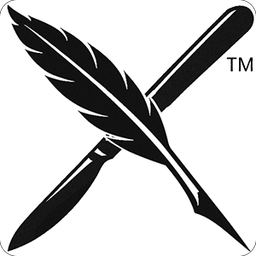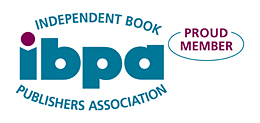I was surfing through Reddit to see what people are saying about self-publishing. It’s funny how many people in self-publishing forums extol the virtues of traditional publishing and excoriate any company that dares to charge for services.
But I get it. I’ve been down this road, and I know what all the signs look like. I’ve been utterly disgusted — I’m still disgusted — by the amount of money being charged for questionable outcomes. That’s why I wanted to share my imprint with serious authors.
At first, I thought about offering what basically amounted to a handful of ISBNs and an imprint. But then, I’d have no way to protect the imprint from AI slop or harmful content. And the more I sat with it, the more I realized it didn’t solve the real problem. Serious authors don’t just need numbers and a name on a spine. They need their book to look, feel, and function like something that belongs in the same world as traditionally published titles, while still keeping control and the lion’s share of the royalties. That’s where I decided Dilettante Press should focus: a true publishing workflow, not a half-measure.
The amount of work required for self-publishing depends on what you want to achieve. Want that sliver of a hope your book will wind up in a brick-and-mortar bookstore? You’ll need maximal effort to achieve that. Do you want your book to at the very least be eligible for the New York Times Bestseller list? You’re going to need to fudge around a bit, buy at least one ISBN, make up a publisher name, and make sure your title page is correct. Books with no ISBN or the free ones Amazon KDP doles out are instant disqualifiers.
Let’s be both realistic and honest. Of all the published authors, regardless of publishing route, how many are runaway successes? How many are truly “best-selling” authors? A very small fraction of a percent. How do they get there? Money, sweat, and luck. It isn’t that it is impossible; it just takes a good product and an even better sales pitch.
Traditional publishers (I’ll call them the Big 5) have a tried and true workflow. They have dozens of imprints and own dozens of indie presses — like the major and minor leagues of books. They almost never approach someone for a book unless there’s a good reason. If someone becomes a sustained viral sensation, invents the next big widget, has a compelling story to tell, or performs some other extraordinary feat, they’ll send someone to buy a book deal. Other than that, authors go fishin’.
Here’s the thing about traditional publishing: the majority of authors never see a dime past their advance. The simple reason is that there are seldom enough sales to “earn out” past the advance, or overcome the holdback for returns.
Publishers don’t want an unknown quantity. It doesn’t really matter how good your book is. Maybe if the chief editor goes gaga over it, they’ll ignore the fact that you have 300 Facebook friends, 200 on X, 100 on Instagram, and haven’t posted in over a month. What they expect — what agents also expect — is that you have a following. You have access to a few thousand sets of eyes and ears that follow you on social media and creative outlets like YouTube, Substack, Medium, and the like.
But here’s the kicker: If the author has that kind of platform in the first place, a $5–6,000 investment in editors and designers, and a heaping helping of elbow grease will return exponentially more with self-publishing. In that respect, traditional publishers are relatively obsolete.
Why is good writing not good enough? Because marketing is expensive, and if you can sell books to 10% of your followers — at least a thousand books or so — then they can make a small, fast buck without having to shoot the moon with marketing money.
At its core, a publisher is a business. It isn’t a dream maker. It isn’t on this earth to bring truth and joy. They exist for one purpose and one purpose only: to make money.
This can sometimes be an ugly truth. Writers are quite often passionate people. Writing is often a labor of love. For some, writing is life. That passion, love, and life, however, can’t be monetized in the traditional sense.
In the vainglorious sense, it most certainly can.
Spend enough time on self-publishing websites, forums, and chat groups, and you’ll soon see that for most of the most vocal, there are only two viable paths to publishing a book: traditional publishing (so amusingly ironic how often that comes up) or self-publishing. And according to many, everyone should be able to figure out all the fuzzy details of the process.
However, there is simply no one-size-fits-all approach to publishing. It depends on the very reason you want to publish a book in the first place.
If you just want to publish, hack out some words, save it to a Word doc, fill out a form online at Amazon KDP, and voila! You’re published! You don’t need to edit. No need to even proofread it yourself. Snag some free book cover art from a trial on a graphics website, and you’ve got a book. And who knows? It could, by the largest of lucky strikes, hit the chart.
On the other hand, if you would like for your book to be discoverable and potentially acquired by libraries — a long shot for any book, regardless of where it came from — then you’re going to have to spend a couple hundred hours doing the work and a few hundred hours more learning how, and in what order you need to do those things in — many of those steps are circular.

If you don’t have a platform and a following and you’re writing to make money, please stop. Just stop. Unless you’re already hacking out a living doing it, or are independently wealthy and have access to the finest antidepressants, just stop.
That is positively the worst reason ever to write and try to publish a book.
If you have a story to tell, then tell it. If you do make a good living (or even get rich) from your books, count every single royalty check as a blessing because you can bet your bottom dollar that someone who writes better than you is starving.
If you have all the ingredients to attract a traditional publisher, then go for it. One published book by the Big 5 is an open door — even if just slightly. The best way I know to go that route is to find an agent. Costs nothing but time, or a few hundred bucks to get someone who knows the biz to whip up your pitch. Just be aware that it’s next to impossible to get a traditional publisher to buy a book that’s already been published.
You buys your tickets, you takes yer chances. I am disqualified from traditional publishing because I genuinely abhor social media. That’s not to say that with every book I’ve started, and the fewer I’ve finished, I didn’t dream — at least for a minute or two — of landing a big book deal, touring the country signing books in book stores, getting interviewed on talk shows and podcasts, and getting paid in advance to write the next golden best seller. Or, more realistically, making some money without having to put in the god awful amount of effort it takes just to make the thing a reality (my way) in the first place.
So then, is it worth it to pay someone to publish your book? About as worth it as a scratch-off lottery ticket, I suppose. But with the added bonus of grit, determination, and hard work, pushing the odds better in your favor.
Here’s where I stand on the issue of paying someone to publish your book: what are you getting in return for your money? Time? Experience? Lofty promises?
What I would avoid from any “subsidy” publisher (vanity, hybrid, or an oddball like Dilettante Press) is the long-term residuals. I’m going to be as plain about this as I can. Do NOT front a publisher money, and then sign away your royalties. A small portion is fine for administrative costs. They’ll have to deal with the accounting and the ambiguous tax laws, but it’s not hard. We charge a simple 90/10 split of net receipts, capped at $1,500 per quarter. The rest is yours. Nothing beyond that. Hell, KDP already takes a publisher’s cut even with your own ISBN and imprint. There ain’t that much left to take!
If you absolutely and positively just have to have 100% of royalties, we can do that, too. In that case we charge $500 per year for account maintenance.
I know how much work goes into what I offer, and how much comes out of the fee I’m asking for. In the end, I’m making about $35–50 per hour for my labor. If it were just about the money, I’d scrap this idea and go freelance on Reedsy or somewhere doing book design and typesetting.
But it’s not.
It’s about taking the load off and saving someone else a ton of time. At the end of the day, that’s my primary product. I’m selling you time. A properly done ISBN, LCCN, PCIP, and a professional imprint are just the extras. I’m selling tangible services, too — stuff I’m good at like interiors and typesetting.
I’m not holding anything back here. If you’re not sure about the steps I’ve outlined or what it takes to get from point A to B, drop me a line. If you look at it and know you’ve got the time, go for it. It’s not a bad experience, truly. The sense of pride and accomplishment I feel from having done the whole thing, soup to nuts — except for editing, of course, I paid handsomely for that — is amazing. Every time I look at the book nobody bought, I am delighted with the outcome.
But what I do know, too, is that the process — depending on what it is you want out of it — is tedious and confusing. I have a very specific workflow to cover all the bases that are important to me, and to make my book look exactly the way I want it to. I didn’t do that with the first one because I didn’t know better. I did some things out of order that blocked off things I wanted — like a Library of Congress Control Number (LCCN), or the chance the book might someday sit in those hallowed stacks.
Is it a big deal or even a bitter pill to swallow? No, not really. It’s really just window dressing. But then again, I never meant to sell the book anyway. That wasn’t why I wrote it or got copies to give away. But that’s me, and that’s the way it is for that book. The next one, not so much. I want a lot more. I don’t expect the next one to make a profit either, just because I understand the odds, but that isn’t going to stop me from removing the roadblocks to its success either.










